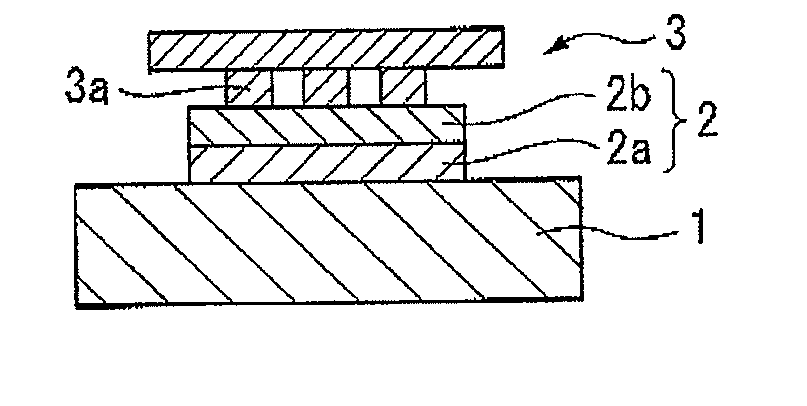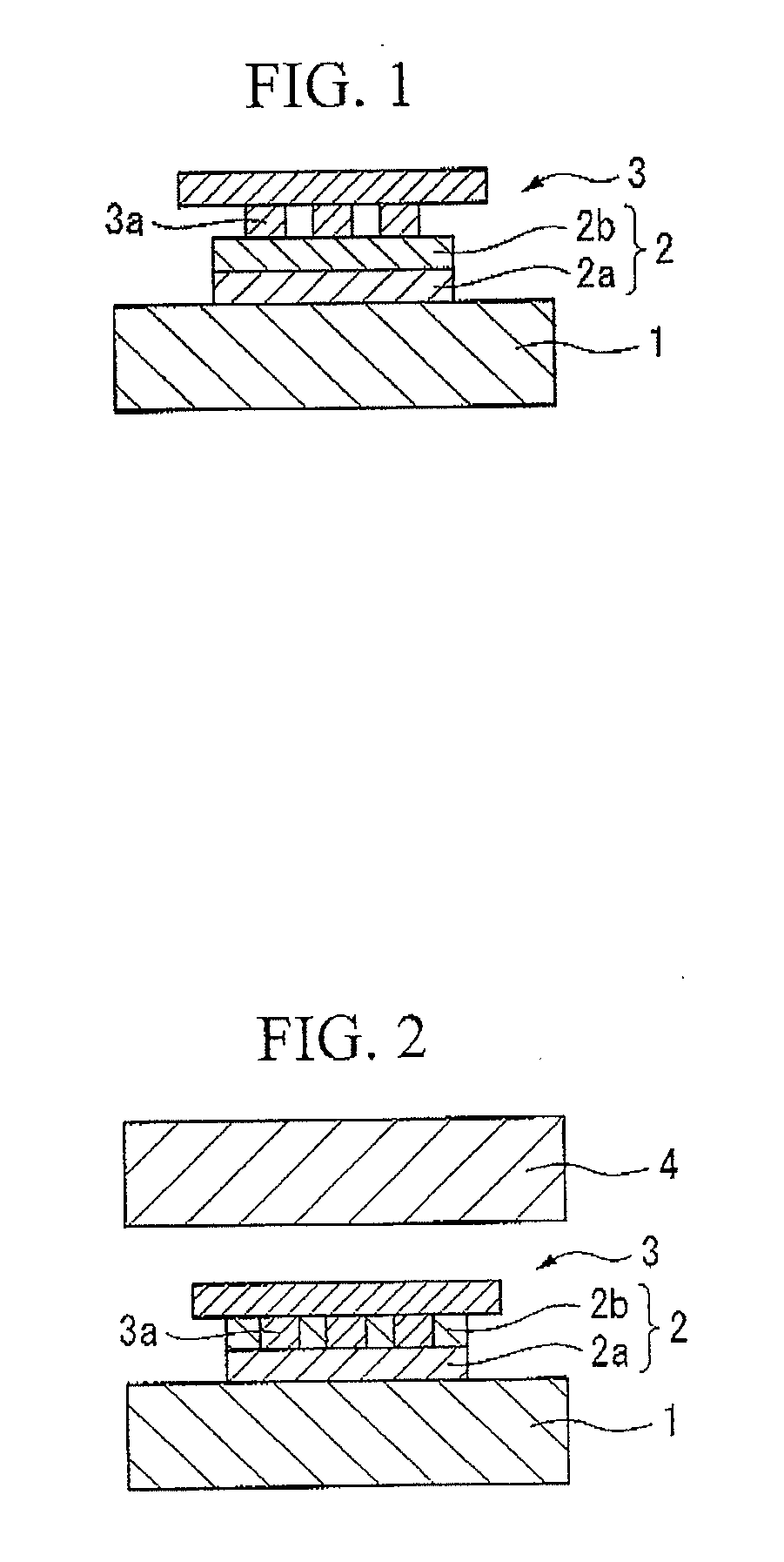UV nanoimprint method, resin replica mold and method for producing the same, magnetic recording medium and method for producing the same, and magnetic recording/reproducing apparatus
- Summary
- Abstract
- Description
- Claims
- Application Information
AI Technical Summary
Benefits of technology
Problems solved by technology
Method used
Image
Examples
example 1
Temperature Rise Caused by Ultraviolet Light Irradiation
[0157]In example 1, in order to confirm the temperature rise effect caused by ultraviolet light irradiation, the comparative evaluation described below was performed. First, a polyethylene terephthalate film (product name: COSMOSHINE A4100, manufactured by Toyobo Co., Ltd., thickness: 100 μm) was cut to form circular test pieces having a diameter of 2 cm. Subsequently, in a room set to a room temperature of 25° C., the surface of each test piece was irradiated with ultraviolet light from one of the two light sources described below, and the surface temperature of the test piece was then measured. The results are listed below in Table 1.
(Example 1) Light source: light emitting diode-based spot light source, wavelength: 365 nm, intensity: 40 mW / cm2, irradiation time: 12.5 seconds
(Comparative example 1) Light source: continuously lit lamp-based spot light source, intensity: 40 mW / cm2, irradiation time: 12.5 seconds
TABLE 1Temperatu...
example 2
Production of Magnetic Recording Medium
[0160]In example 2, the UV nanoimprint method according to the first embodiment of the present invention was used to produce a resin replica mold, and the mold was then used to produce a magnetic recording medium.
(Preparation of Resin Replica Mold)
[0161]First, a polyethylene terephthalate film (product name: COSMOSHINE A4100, manufactured by Toyobo Co., Ltd., thickness: 100 μm) was cut to form a circular donut-shaped sample having a diameter of 55 mm and a hole diameter of 12 mm. Subsequently, as illustrated in FIG. 19, a liquid resin for UV imprinting (product name: NIF-A-1, manufactured by Asahi Glass Co., Ltd.) was applied to a coating surface 28a with a bar coater, in an amount sufficient to form a coating with a thickness of approximately 10 μm, thus completing preparation of a work 28.
[0162]As illustrated in FIG. 20, a mother stamper 29 used in the production of the resin replica mold is a Ni circular plate shape having a diameter of 65 m...
example 3
Temperature Rise Caused by Ultraviolet Light Irradiation
[0168]In example 3, in order to confirm the temperature rise effect caused by ultraviolet light irradiation, the comparative evaluation described below was performed. First, a polyethylene terephthalate film (product name: COSMOSHINE A4100, manufactured by Toyobo Co., Ltd., thickness: 100 μm) was cut to form circular test pieces having a diameter of 2 cm. Subsequently, in a room set to a room temperature of 25° C., the surface of each test piece was irradiated with ultraviolet light from one of the two light sources described below, and the surface temperature of the test piece was then measured. The results are listed below in Table 3.
(Example 3) Light source: continuous pulsed emission-type quartz xenon lamp (Aicure ANUP-8, manufactured by Matsushita Electric Works Co., Ltd.), intensity: 40 mW / cm2, irradiation conditions: 0.1 ms per pulse, 10 Hz, irradiation for 12.5 seconds. The light emission spectrum is shown in FIG. 22.
(C...
PUM
| Property | Measurement | Unit |
|---|---|---|
| Wavelength | aaaaa | aaaaa |
| Temperature | aaaaa | aaaaa |
Abstract
Description
Claims
Application Information
 Login to View More
Login to View More - R&D
- Intellectual Property
- Life Sciences
- Materials
- Tech Scout
- Unparalleled Data Quality
- Higher Quality Content
- 60% Fewer Hallucinations
Browse by: Latest US Patents, China's latest patents, Technical Efficacy Thesaurus, Application Domain, Technology Topic, Popular Technical Reports.
© 2025 PatSnap. All rights reserved.Legal|Privacy policy|Modern Slavery Act Transparency Statement|Sitemap|About US| Contact US: help@patsnap.com



